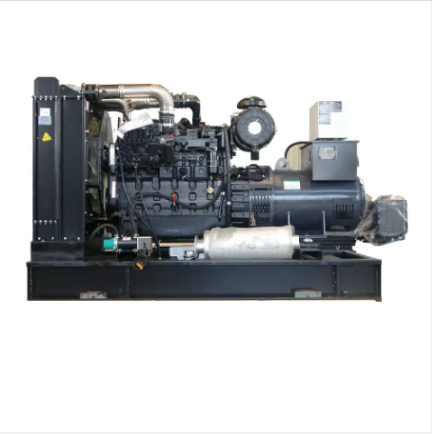ارزیابی نیازمندیهای برقی برای انتخاب ژنراتور برق
برای انتخاب تولیدکننده برق مناسب، برآورد صحیح نیازهای برق خود اهمیت دارد. ابتدا باید مشخص کنید کدام وسایل و تجهیزات از تولیدکننده برق شما استفاده میکنند. با شروع از هر آیتم مثل یخچالها، گرمایشها و دستگاههای پزشکی، به تعیین ولتاژ شروع و عملکرد هر کدام بپردازید. برخی از وسایل مصرفی ممکن است ولتاژ شروع بالاتری داشته باشند و باید هر دو را در نظر بگیرید. پس از جمعآوری این دادهها، مجموع ولتاژ را محاسبه کنید تا نیاز به قدرت شروع (سرج) و عملکرد (پیوسته) خود را تعیین کنید.
فکر کنید که تولیدکننده برق باید چقدر زمان بدون توقف اجرا شود. این نیاز مبتنی بر زمان اجرایی حائز اهمیت است، زیرا وقتی روشنایی برای مدت زمان طولانی خاموش باقی میماند، نیاز به سیستمهای پشتیبان بهتری دارید. نیاز به قدرت متوسط روزانه را به صورت توضیح داده شده در بخش بعدی، 'چرخه وظیفه متوسط برای مصرف انرژی' تعیین کنید تا ظرفیت سوخت تولیدکننده برق و کارایی کلی آن را تعیین کنید. تنظیم مناسب تولیدکننده برق تضمین میکند که بتواند نیازهای شما را برآورده کند. خانه نیازهای آن شامل تأمین قدرت به مدارها و دستگاههای اصلی مانند فورنا، پمپ چاه و مدارهای نور انتخابی است.
اولویت بندی بارهای اساسی نسبت به غیر اساسی
بار اساسی نسبت به غیر اساسی: هنگامی که در حال برنامهریزی برای مدیریت قطع برق هستید، تمایز بین بارهای اساسی و غیر اساسی ضروری است. این بارهای اساسی میتوانند شامل یخچالها یا دستگاههای پزشکی باشند که نیاز به برق دارند زمانی که قطع برق رخ میدهد. در مقابل، بار غیر اساسی ممکن است شامل نورپردازی، دستگاههای سرگرمی یا ماشینآلات دیگری باشد که میتوانند خاموش شوند تا انرژی صرفهجویی شود.
چون معمولاً میتوان اولویت بندی دستگاهها را انجام داد، این امکان را فراهم میکند که لیستی تهیه شود که دستگاههایی که توسط جنراتور پشتیبانی میشوند بر اساس اولویت مشخص شوند. این رویکرد اطمینان میدهد که شما در صورت قطع برق احساس امنیت داشته باشید و جنراتور شما بتواند در حین قطع برق بار اوج را تحمل کند همزمان با تأمین نیازهای اساسی شما. خانه . اگر شما مانند بسیاری دیگر هستید و به تعداد زیادی از دستگاهها وابسته هستید، داشتن یکی که در حال کار باشد میتواند جاننجاتکننده باشد، بنابراین خوب است بررسی کنید که ژنراتور چقدر میتواند بارهای پیک را زمانی که نیاز به برق برای آیتمهای حیاتی وجود دارد، مدیریت کند
مقایسه انواع ژنراتور الکتریکی
تولیدکنندههای قابل حمل: جابجایی و راه حلهای تامین برق موقت
ژنراتورهای قابل حمل همانطور که نامشان نشان میدهد، میتوانند هر جا که لازم باشد استفاده شوند، تنها کافی است آنها را حرکت دهید و قدرت دقیقی که نیاز دارید را در محل مورد نظر خود دریافت خواهید کرد. ژنراتورهای AYS قابل حمل به دلیل قابلیت جابجایی و ساخت سریع، برای استفادههای متعددی مناسب هستند. آنها میتوانند در کاربردهایی مثل کمپینگ و رویدادهای بیرونی بسیار مفید باشند، علاوه بر اینکه میتوانند به عنوان منبع قدرت پشتیبان طی قطع برق عمل کنند. اما باید محدودیتهایشان را هم به صورت واقعیت بشناسیم که شامل وابستگی به دما و کار کردن فقط وقتی است که سوخت موجود باشد. تمام این ژنراتورها به تأمین انبوهی از بنزین نیاز دارند که در آب و هوای سخت کسب آن میتواند دشوار باشد
ژنراتورهای پیش فرض: عملکرد خودکار برای سیستم های بحرانی
ژنراتورهای پیش فرض منبع قابل اتکا و ثابتی از توان بک آپ را هرگاه قطعی در تأمین انرژی رخ دهد، ارائه می دهند و به طور خودکار ملک شما یا خانه و تجهیزات اصلی خانه مانند یخچالها/فریزرها، کولرهای هوایی، عناصر گرمایشی و پمپهای سump در بیشتر موارد این واحدها به طور مستقیم به سیستم برق خانه متصل میشوند و نصب حرفهای نیاز دارند. این پیکربندی همچنین بدلیل داشتن واحدهای اضطراری قابل اطمینان که برای کار کردن طولانی مدت با نگهداری و سرویس منظم طراحی شدهاند، عملکرد دوامآور را بهینه میکند. حتی با وجود قیمت اولیه بالاتر نسبت به گزینههای قابل حمل، برای بسیاری از مالکان خانه؛ آرامش خاطر و سهولت استفاده در زمان قطع برق هر دو مزیت حیاتی محسوب میشوند.
ژنراتورهای انورتر: کارایی سوخت و الکترونیک حساس
ژنراتورهای نوتروتر در زمینه ارائه برق پایدار، که واقعاً ارزشمند است وقتی به الکترونیکهای حساس میپردازیم، بالا میآیند. آنها نوعی فناوری جذاب دارند که خروجی را تنظیم میکند، بنابراین شما اسبابهایی مثل لپتاپها و تلفنهای همراه را نخواهید سوزاند. همچنین، این ژنراتورها برای محیط زیست مناسبتر هستند، هزینههای کمتری برای اجرای آنها وجود دارد و نسبت به ژنراتورهای کلاسیک به مراتب آرامتر هستند؛ پس اگر به دنبال یک ژنراتور برای کمپینگ هستید، یا شاید فقط در صورت اضطرار که نویز زیاد مشکل باشد، این ژنراتورها عالی هستند! اینکه قابل حمل هستند نیز به این معنی است که گزینه مورد علاقه برای هر کسی که نیاز به منبع قابل اتکا برای برق در حال حرکت دارد، هستند.
ژنراتورهای خورشیدی: کاربردهای مستقل و دوست دار محیط زیست
ژنراتورهای خورشیدی: چیستند و چگونه کار میکنند؟ ژنراتورهای خورشیدی راه جدیدی برای تولید انرژی دوستدار محیط زیست هستند که کاربردهای مختلفی دارند، از شارژ کردن یک تلفن همراه تا تأمین برق یک خانه کامل و همه چیز بین آنها. هرچند این مواد در تلاش برای کاهش اثرات کربنی به شدت کمک میکنند، باید به مسائلی مثل ظرفیت ذخیرهسازی و وابستگی به نور خورشید توجه کرد. با وجود این مشکلات، مزایای استفاده از منبع تجدیدپذیر به معنایی است که ژنراتورهای خورشیدی گزینهای جذاب برای افراد محیطزیستدوست هستند که به دنبال گزینههای انرژی سبز در مکانهای فاقد شبکه هستند.
بررسی منابع سوخت در انتخاب ژنراتور برق
بنزین نسبت به پروپان: تعادل هزینه و ذخیرهسازی
مزایا و معایب سوخت گازولین نسبت به پروپان برای تولیدکنندهها روشهای مختلفی برای تأمین سوخت تولیدکننده وجود دارد: گاز طبیعی، دیزل، بیو-دیزل، پروپان، و غیره که همه آنها توسط ترجیحات شما، قیمت و امکان ذخیرهسازی آسان تعیین میشوند. گازولین معمولاً در دسترستر است و ممکن است از نظر مالی ارزانتر به نظر برسد، اما قیمت گازولین میتواند بر اساس شرایط بازار نوسان نماید. ذخیرهسازی گازولین باید به درستی انجام شود زیرا گازولین مادهای شدیداً نوسانپذیر است که باید با احتیاط امنیتی رسیدگی شود. در مقابل، پروپان قیمت ثابتی دارد و طراحی شده است تا در سیلندرها به راحتی ذخیره شود، بنابراین گزینهای امنتر است.
با این حال، انتخاب بین این سوختها نیز به سناریوهای استفاده بستگی دارد:
- بنزین برای کاربردهای کوتاهمدت مزیت دارد زیرا چگالی انرژی بالاتری دارد و توانایی تزئین سریعتر است.
- پروپان مناسبتر است برای موقعیتهایی که در آنها قابلیت اعتمادپذیری بلندمدت و سوزش تمیزتر اولویت دارد، مانند مناطق حساس به محیط زیست.
ارزیابی هزینه نسبت به اندازه گیری ذخیره سازی و امنیت می تواند در انتخاب سوخت شما راهنمایی کند، که به عملکرد بهینه تولیدکننده برق برای نیازهای خاص کمک می کند.
تولیدکننده های دیزل برای استفاده تجاری با درخواست بالا
تولیدکننده های دیزل راه حل منبع قدرتی کارآمدترین و بهینه ترین را برای کاربردهای تجاری و مصرف کننده فراهم می کنند. آنها از نظر هزینه برای استفاده پیوسته در موقعیت هایی که نیاز به قدرت قابل اتکا دارید، مانند سایت های ساخت و ساز بزرگ یا مرکز داده ها، کارآمد هستند زیرا کارایی سوخت و طول عمر را فراهم می کنند. به طور کلی، موتورهای دیزل طول عمر بیشتری نسبت به موتورهای بنزین دارند زیرا می توانند کاربردهای تجاری سخت را در بلندمدت تحمل کنند.
با این حال، نگهداری از تولیدکننده دیزل نیاز به توجه خاصی دارد:
- بررسی های مکرر موتور و خدمات حائز اهمیت برای عملکرد بدون وقفه است.
- آنها نیاز به تأمین سوخت تمیز و تغییرات فیلتر اوقات مختلف دارند تا جلوگیری از آلودگی سوخت انجام شود.
این عوامل به طور قابل توجهی به عملکرد قابل اتکا تولیدکنندههای برق دیزل کمک میکنند و آنها را به یک ابزار اصلی در بخش تجاری برای نیازهای انرژی سختگیرانه تبدیل میکنند.
اتصال خطوط گاز طبیعی برای تأمین بدون قطع
مزایای تولیدکنندههای برق گاز طبیعی تولیدکنندههای برق گاز طبیعی از مزیت استفاده مستقیم از خطوط گاز موجود در بسیاری از خانهها برخوردار هستند که جریان سوخت پیوسته را امکانپذیر میسازد. این تنظیمات مطلوب است، زیرا انرژی ارزان، قابل دسترس و قابل اتکا را فراهم میکند. نه تنها این، بلکه گاز طبیعی تمیزتر از بیشتر سوختهای فسیلی دیگر سوزانده میشود و اثر کربن کلی استفاده از تولیدکنندهها را کاهش میدهد. «اما نصب آن پیچیده است، زیرا باید قوانین را دنبال کرد، اجازهنامه درخواست کرد، لازم برای ایمنی و غیره».
مزایای استفاده از تولیدکنندههای برق گاز طبیعی شامل:
- بهره وری از هزینه گاز طبیعی معمولاً ارزانتر از بنزین یا دیزل است.
- دسترسی پیوسته تأمین قابل اتکا از طریق خطوط گاز، ریسک کمبود سوخت را در طی قطعات طولانی کاهش میدهد.
هر چند این مزایا وجود دارد، باید به طور کامل به پیچیدگیهای ممکن در نصب توجه کرد، اطمینان حاصل کنید که با استانداردهای محلی هماهنگ باشید و برای ایمنی و کارایی، از نصب حرفهای استفاده کنید.

شرایط نصب و ایمنی
انواع سوئیچ ترانسفر و رعایت مقررات NEC
اکسسوریهایی که در سیستمهای جنراتور برای عملکرد امن مهم هستند، سوئیچهای انتقال هستند. این سوئیچها منبع توان برق خانه شما را در صورت قطع برق فراهم میکنند و اجازه عملکرد پیوسته جنراتور را میدهند تا خانه شما تأمین برق و امن باقی بماند. معمولاً دو نوع سوئیچ انتقال وجود دارد: مکانیکی و خودکار. سوئیچ خودکار: سوئیچهای انتقال خودکار برق را به جعبه شکاف شما بازگرداندند بدون نیاز به مداخله کاربر، زمانی که جنراتور شما با موفقیت شروع به کار کرده و برق شهری در دسترس باشد. سوئیچ دستی: سوئیچهای انتقال دستی مدیریت برق به جعبه شکاف شما را انجام میدهند و باید به طور دستی روشن و خاموش شوند توسط کاربر در پنل برق. رعایت مقررات NEC (کد برق ملی) الزامی است، چرا که این موارد نصبها را قانونی و امن میکند. رعایت NEC امنیت شما و تجهیزات شما را تضمین میکند و خطاهای برقی آسیبزای را جلوگیری میکند.
استراتژیهای کاهش صدا و فاصلههای هواگیری
تهویه مناسب بسیار حیاتی است؛ گاز میتواند گرما کافی برای ایجاد انفجار تولید کند. تولیدکنندهها باید به طوری نصب شوند که فضای کافی دور آنها برای جریان هوا و سرد کردن وجود داشته باشد، این موضوع احتمال خسارت یا آتشسوزی را کاهش میدهد. قانون عمومی این است که حداقل پنج فوت فاصله را در تمام جهتها حفظ کنید. علاوه بر فواصل، کاهش صدا با استفاده از کنترل غیرفعال نیز میتواند سطح اغتشاش را به میزان زیادی کاهش دهد. دستگاههایی مانند مودیونها و تولیدکنندههای واریو میتوانند به محدود کردن سطح صدا کمک کنند تا از تولیدکننده بیشتر تحمل شود، به ویژه در مناطق مسکونی.
نیازهای زمینبندی برای نصب بیرونی
ارتباط با زمین ویژگی ایمنی اساسی در نصب تولیدکنندههای برق خارج از خانه است که به منظور جلوگیری از خطر شوک الکتریکی است. ارتباط صحیح با زمین مسیر ایمنی برای جریان برق اضافی فراهم میکند و از شوک الکتریکی جلوگیری میکند. دستگاههای مختلف ارتباط با زمین، مانند چوبهای زمینی و صفحات، دارای مزایای خود هستند، مانند نصب آسان و طول عمر بلند. رعایت قوانین و استانداردهای محلی نوع سیستم زمینبندی مناسب را تعیین میکند. این رعایت کمک میکند تا شما و خانوادهتان ایمن باشید و نصب تولیدکننده برق شما با استاندارد باشد.
محاسبه نرخ مصرف سوخت بر حسب کیلووات ساعت
مصرف سوخت به ازای هر kWh برای هزینه عملیاتی جنراتور برقی حائز اهمیت است. برای محاسبه این مقدار، باید بدانیم چقدر سوخت برای تولید یک مقدار مشخص برق مصرف شده است. به عنوان مثال، اگر یک جنراتور ۱ گالن سوخت برای تولید ۱۰ kWh مصرف کند، نرخ آن ۰٫۱ گالن در kWh خواهد بود. انواع مختلفی از جنراتورها وجود دارد (از جمله دیزل، گاز طبیعی و غیره) و هر کدام نرخهای متفاوتی از مصرف سوخت و هزینههای بلندمدت دارند. با دانستن این نرخها، میتوانید هزینههای سوخت خود را تخمین بزنید. به عنوان مثال، جنراتورهای دیزل ممکن است هزینهبرتر باشند زمانی که قیمت سوخت افزایش پیدا کند، و جنراتورهای گاز طبیعی تحت شرایط مختلف قابل اجرا باشند. دانستن این اعداد در انتخاب کمترین هزینه منبع تأمین انرژی کمک میکند.
بازههای تغییر روغن و هزینههای جایگزینی قطعات
نگهداری منظم کلیدی برای طول عمر و عملکرد جنراتورهاست، حتی کار ساده ای مثل تغییر روغن. فرکانس تغییر روغن معمولاً توسط نوع جنراتور و میزان استفاده از آن تعیین می شود، یعنی چند ساعت جنراتور برق تولید کرده است. در صورتی که جنراتور دیزل باشد، به علت بار موتور، نیاز به جایگزینی روغن ممکن است متعددتر باشد. علاوه بر تغییر روغن، قطعات استاندارد دیگری که باید جایگزین شوند شامل فیلتر هوا، لامپ ها و بند ها می باشند. من می دانم این قطعات هزینه های اضافی ایجاد می کنند، بنابراین هزینه ممکن است نگران کننده باشد. نگهداری جنراتور با این نکات، نه تنها طول عمر آن را افزایش می دهد بلکه اطمینان می دهد که به طور موثری برای شما خدمت کند.
روش های آماده سازی زمستان و پروتکل های ذخیره سازی فصل خالی
ژنراتورها باید زمستانه شوند تا از آسیب در فصل غیرفعالیت جلوگیری شود و هنگام نیاز مجدد به کارکرد آنها، قابلیت اطمینان حفظ شود. برای آمادهسازی دستگاه برای بهار آینده، لازم است چند مرحله را انجام دهید — همچنین باید سوخت را تخلیه کنید، ضدیخ را به سیستم خنککننده اضافه کنید و قطعات را با روغن مناسب روانکاری کنید تا از گیر کردن و زنگ زدن قطعات جلوگیری شود. روشهایی که از آسیب محیطی محافظت میکنند، از جمله پوشاندن ژنراتور و نگهداری آن در محلی خشک، پیشگیری موثری محسوب میشوند. همچنین انجام بازرسیهای نگهداری قبل از فصل بعدی استفاده میتواند مفید باشد. انجام کارهای ساده مانند بررسی آسیب حشرات و شارژ کردن باتریها نیز برای شما بیاهمیت نیست! تمام این فرآیندها تضمین میکنند که ژنراتور آماده باشد و طولانیمدت دوام بیاورد.
بخش سوالات متداول
چگونه میتوانم اندازه ژنراتور برقی لازم برای خانهام را تعیین کنم؟
شما باید ابتدا تمام تجهیزات ضروری و نیازهای واتی آنها را فهرست کنید. مجموع وات استارت آنها را برای نیازهای قدرت پیک جمع کنید و وات عملیاتی آنها را برای نیازهای مداوم محاسبه کنید، تا مطمئن شوید جنراتور میتواند این نیازها را بدون قطعیت مدیریت کند.
نقاط قوت استفاده از یک جنراتور حملی چیست؟
جنراتورهای حملی بسیار منعطف هستند و تلفن همراهی و نصب سریع را ارائه میدهند، مناسب برای حوادث، کمپینگ و رویدادهای بیرونی است.
چرا باید به جنراتور مستقیم دقت کنم؟
ژنراتورهای مستقیم به طور خودکار توانایی جایگزینی برق را فراهم میآورند، اطمینان میدهند که سیستمهای اساسی در دوران قطع برق عملکرد داشته باشند و قابلیت اعتماد بلندمدت و آرامش روح را ارائه دهند.
چگونه میتوانم نیازهای بار خود را در حالت قطع برق اولویت بندی کنم؟
بارهای ضروری مثل فریزرها و تجهیزات پزشکی باید نسبت به تجهیزات غیرضروری مانند سیستمهای سرگرمی اولویت داده شوند تا انرژی را صرفهجویی کنیم.
Table of Contents
- ارزیابی نیازمندیهای برقی برای انتخاب ژنراتور برق
- اولویت بندی بارهای اساسی نسبت به غیر اساسی
- مقایسه انواع ژنراتور الکتریکی
- بررسی منابع سوخت در انتخاب ژنراتور برق
- شرایط نصب و ایمنی
- محاسبه نرخ مصرف سوخت بر حسب کیلووات ساعت
- بازههای تغییر روغن و هزینههای جایگزینی قطعات
- روش های آماده سازی زمستان و پروتکل های ذخیره سازی فصل خالی
- بخش سوالات متداول

